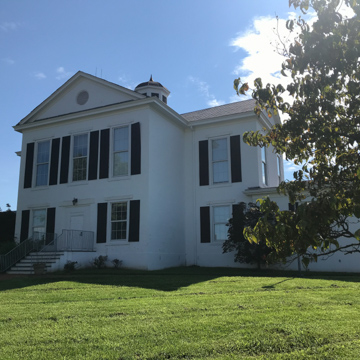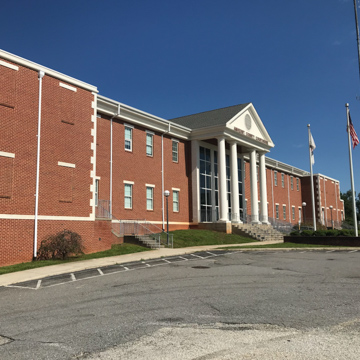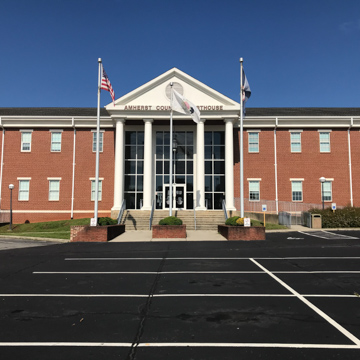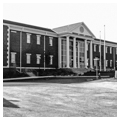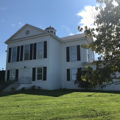When Nelson County split from Amherst in 1807, the Amherst county seat was moved to this crossroads location, but the crossroads that brought Amherst into existence are now splintering it. The town's road pattern at the intersections of U.S. 29, U.S. 29 Business, and U.S. 60 works against a clear sense of place. Even the courthouses cannot be used as a locator. The old courthouse is at the end of a dead-end street, and the new one, backed onto the old one, faces a parking lot. The old courthouse is a curious creation of T-shaped massing that is a late reflection of Jeffersonian classicism combined with Greek Revival trim. Built of brick, now painted white, the three-bay central block with deeply recessed, one-bay, two-story wings is gable-ended with the cornice extending around to form a pediment that frames a circular louvered opening. An octagonal cupola caps the slate roof. Tall windows on the second floor indicate the location of the courtroom. Less noble is the current situation of the courthouse. As a salute to the automobile era, the new building, added to the rear of the old one, faces a parking lot. Gone is the traditional Virginia concept of a grassy and inviting courthouse square designed to promote community life. Still, the architect remembers the classical courthouse tradition with a full-height, Doric portico complete with a circular louvered window in the pediment and attenuated paired columns. The long, two-story brick facade has a glass-fronted central section and two slightly projecting end pavilions. The second-floor lobby of the glass-fronted section contains a notched railing taken from the old circuit courtroom.
You are here
Amherst County Courthouse
c. 1870; 1899 remodeled, Bartholomew F. Smith; 1933 rear addition, Clarence H. Hinnant; c. 1965 side additions; 1997 rear courthouse, William Pearce. E. Court St.
If SAH Archipedia has been useful to you, please consider supporting it.
SAH Archipedia tells the story of the United States through its buildings, landscapes, and cities. This freely available resource empowers the public with authoritative knowledge that deepens their understanding and appreciation of the built environment. But the Society of Architectural Historians, which created SAH Archipedia with University of Virginia Press, needs your support to maintain the high-caliber research, writing, photography, cartography, editing, design, and programming that make SAH Archipedia a trusted online resource available to all who value the history of place, heritage tourism, and learning.



